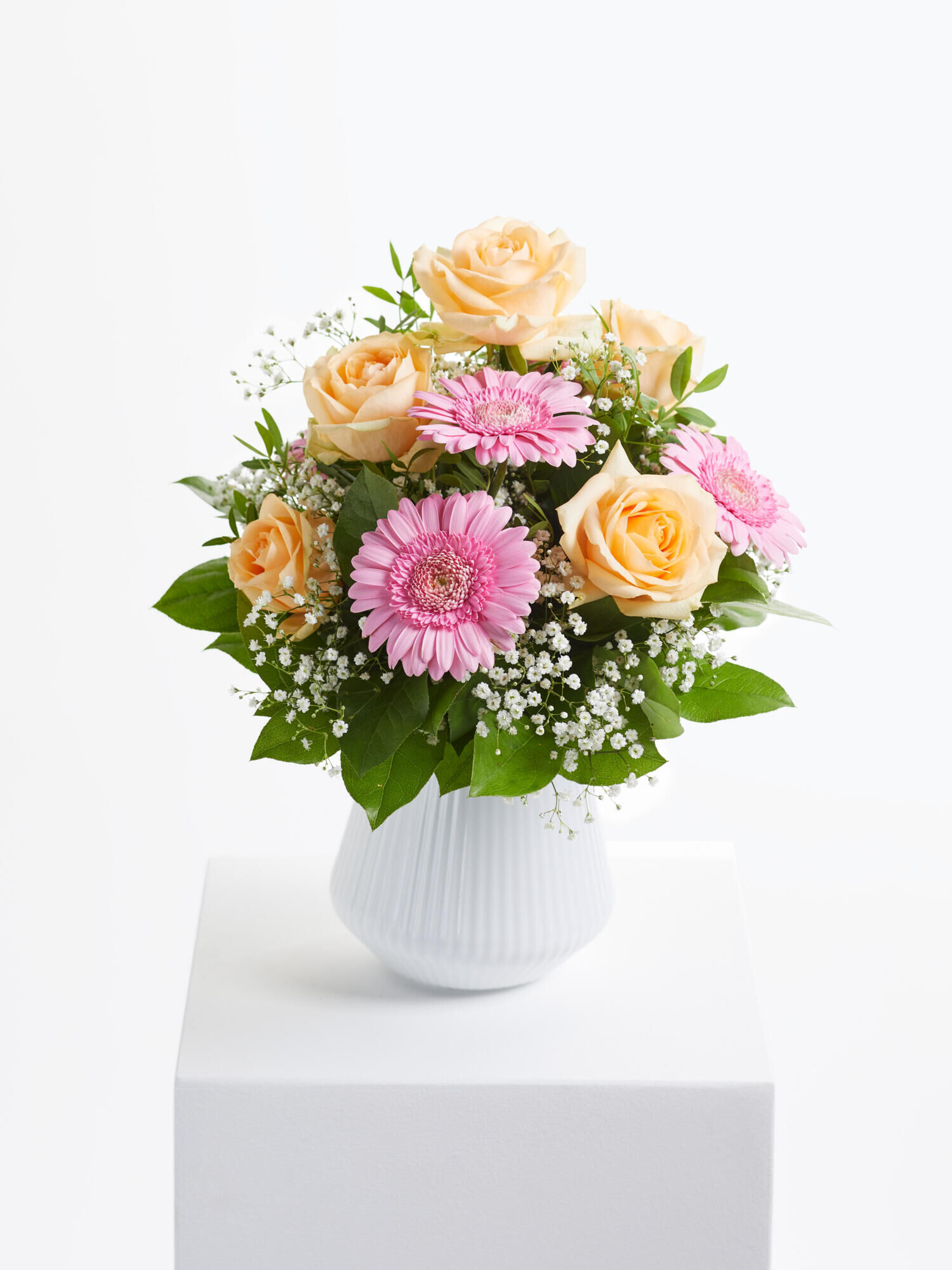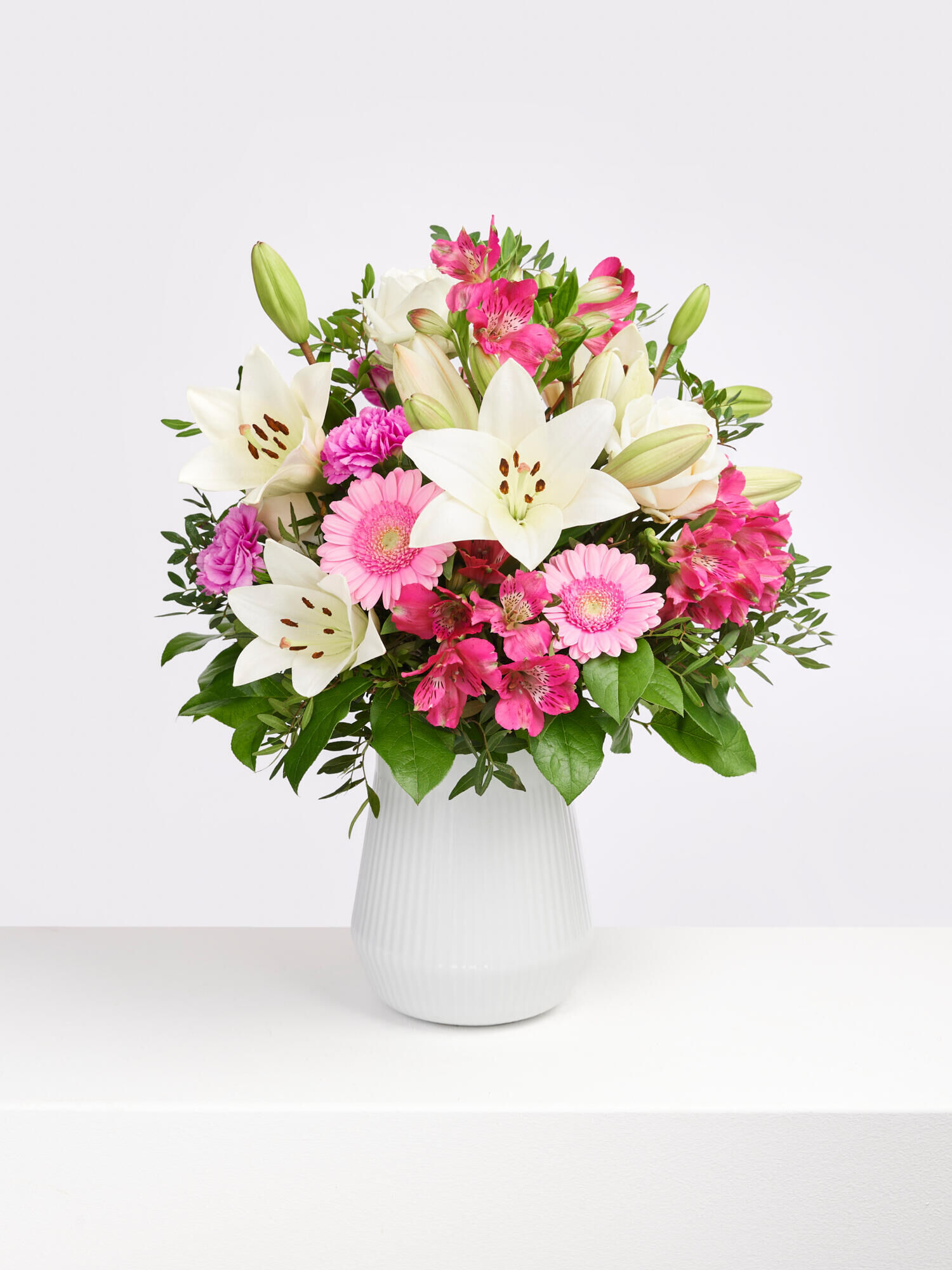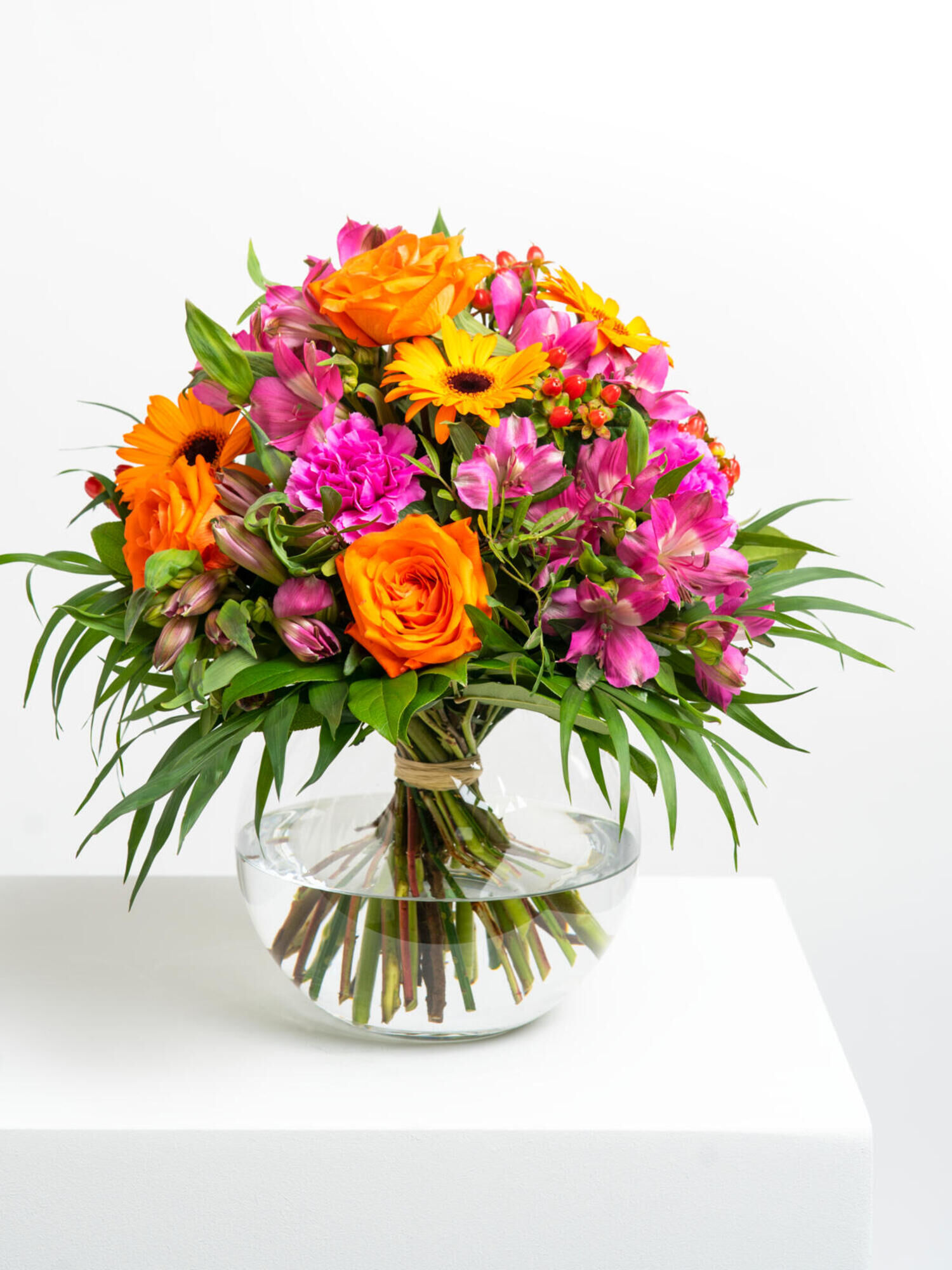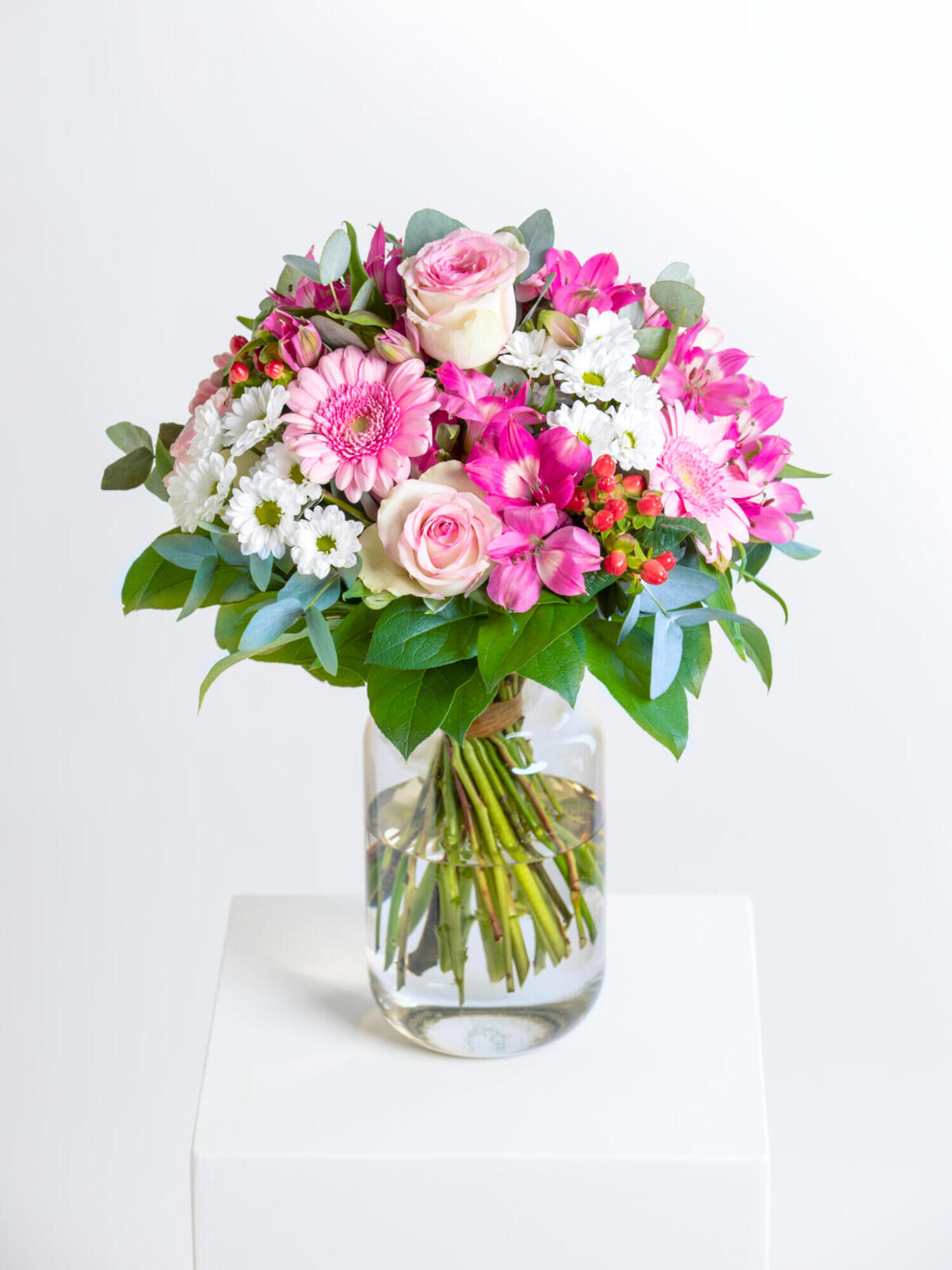Gerbera – origin & care tips

The German natural scientist Traugott Gerber (died 1743) was the inspiration for the gerbera. The well-known flowering plant is heavily cultivated and new hybrids are constantly appearing on the market. The gerbera belongs to the Asteraceae family and originates from southern Africa and Asia. The Dutch botanist Jan Frederik Gronovius initially named them "African Asters" before choosing the name "Gerbera", which is now the Latin and German name for this popular pot and cut flower.
Below you will find everything you need to know about gerberas as houseplants, gerbera care, gerbera species and gerberas as cut flowers in vases and gerberas in pots.
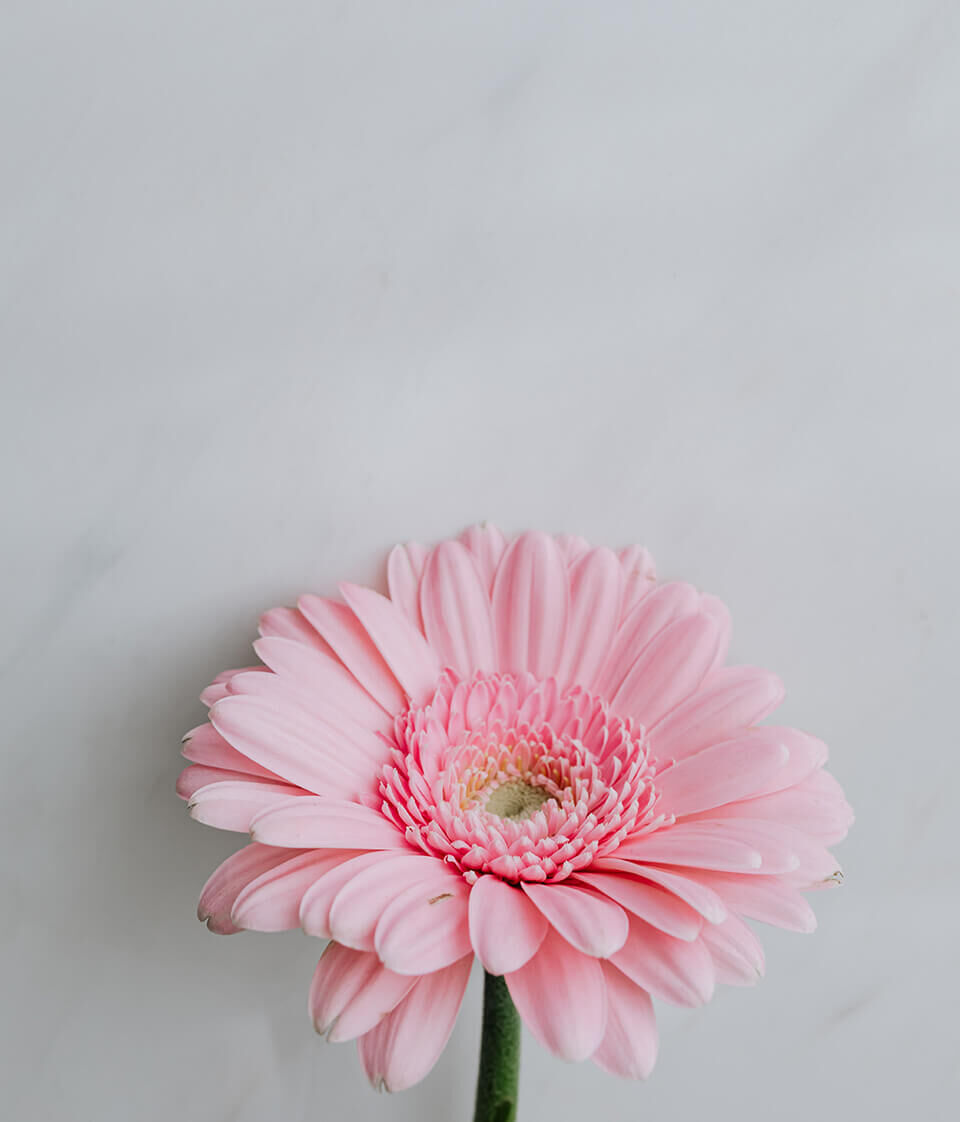
Appearance and flowering time of the gerbera
Growth
The Gerbera is characterised by long flower stalks and large, strong green leaves, some of which are somewhat hairy. The gerbera plant is perennial and herbaceous, growing from a rhizome (perennial organ).
Leaves
The gerbera forms partly slightly hairy leaves with wavy to serrated edges, which are arranged in a basal rosette.
Flowers
A single, large daisy-like flower grows on each of the long flower stalks. Thanks to many cultivars, the flower colours range from white to yellow, orange and red. Apart from blue and violet, no colour preference remains unfulfilled. Bicoloured, semi-double and double flowers are also available on the market.
The origin of the gerbera
The gerbera originates from warm regions in southern Africa, southern Asia and Madagascar.
What types of gerbera are there?
Gerbera jamesonii and Gerbera viridifolia were mostly created by crossing Gerbera jamesonii and Gerbera viridifolia. Today, the varieties are categorised according to their size.
Mini gerberas, which are also known as "germini", have flowers that are six to eight centimetres in size.
The flower size of the standard gerbera is around 13 cm.
The gerbera hybrids in the giant group have 15-centimetre flowers on very long stems. Two-coloured, double and semi-double varieties complete the extensive range.
'Garvinea' varieties or the most commonly propagated 'Everlast' series are not hardy, but cope well with low temperatures and thus also receive a flowering stimulus.
Planting gerberas - the ideal location indoors & outdoors
The perennial gerbera is usually cultivated as an annual plant in our latitudes, as they generally do not tolerate frost. As a potted plant, the gerbera should be placed in a bright position indoors, protected from strong midday sun. In summer, the best place is outside at temperatures above 14 degrees.
Gerberas are not hardy in our latitudes and must be overwintered indoors. Only the new varieties such as Gerbera 'Garvinea' can tolerate a few degrees below zero and are hardy to at least minus 5 degrees. However, the plant should still be covered in the garden.
If you want to rejuvenate older plants, you can propagate the gerbera by root division. Propagation by sowing seeds is possible in autumn and early spring.
Caution: Seeds quickly lose their germination capacity! Rooting cuttings in a little water is possible in summer.
Care tips for gerberas
Gerbera care does not require green fingers. The gerbera cuts a fine figure in a pot or tub in summer on balconies and terraces as a partner to Mediterranean plants such as oleander and the like. If you wish, you can also cut one or two stems from the gerbera as cut flowers for the vase, so that you can also enjoy the flower indoors.
It loves a bright and warm spot and should be protected from draughts. Before the frost arrives, the gerbera should be brought into its winter quarters and overwintered there at 15 to 18 degrees.
Only water or immerse the pot in water when the plant is dry. The gerbera likes it moist, but waterlogging should be avoided to prevent the plant from rotting. In winter, it likes sufficient humidity. This can be achieved with a regular fine (lime-free!) spray, which can also prevent spider mite infestation.
Regular fertilisation during the flowering period from April to September is recommended, preferably with a liquid fertiliser. Fertiliser is discontinued in autumn at the start of the winter dormancy period.
That depends on their growth. It is best to check the rooting. If the pot is heavily rooted, the gerbera should be repotted in spring in a larger pot in a loose, sandy and well-drained substrate. Don't forget to add drainage to the bottom of the pot to prevent waterlogging later on. A good potting soil mixed with sand is ideal.
As a rule, the leaves of the gerbera plant should not be cut off unless they have dried out. However, the flower stems can be used as cut flowers. Faded stems should also be twisted out regularly. They can be pulled out of the rosette of leaves with a quick twist and pull.
Possible diseases and pests
The gerbera has a whole range of enemies. Gerbera blight is particularly typical, causing leaves to discolour and rot until the whole plant is affected and can only be destroyed. Other diseases such as mildew, whitefly, aphids and spider mites often occur due to incorrect choice of location or care errors. If the gerbera does not flower, the pot may be too dark.














